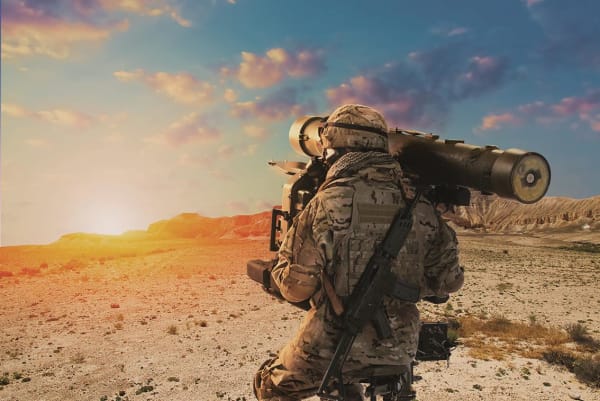Ground-based control of the skies
With the number of aerial threats growing rapidly, effective ground-based air defence (GBAD) is more important than ever. Used either alone or in concert with fighter aircraft, Saab’s GBAD solutions help armed-forces to gain mastery of the sky.

From the moment that the first primitive aircraft were used to drop bombs on troops and facilities, there has been a need for nations to defend themselves against aerial attack.
Faced with an enemy that could swoop in, cause significant damage, and then fly away, armed forced responded by building their own fighter aircraft and developing the first ground-based systems to shoot down the opposition.
Today, aerial threats have advanced significantly, but ground-based air defence (GBAD) and fighter aircraft continue to be the central elements of most nations’ air defence capabilities. Used both separately and in combination, they limit the effectiveness of aerial attacks and protect valuable ground assets from destruction.
Powerful combination
Emil Holm, Director of Technical Sales Support for GBAD at Saab’s Business Area Dynamics, explains that while fighter aircraft like Saab’s Gripen are powerful tactical weapons, it’s not feasible for them to be constantly in the air and to cover large territories alone. This is where effective GBAD systems come into their own.
“GBAD provides you with high fire power that is ready to be deployed, instantly, and can be standing by for months,” he says. “It’s more cost effective than having the air force patrol an area, and it’s perfect for situations where you want to be prepared and to stay hidden.”
GBAD systems are typically composed of three elements: surveillance units to detect the presence of aerial threats, command, control, and communication units to analyse and assess incoming information, and firing units to neutralise threats. Most modern GBAD systems rely on missile technology, with individual solutions capable of neutralising threats at very short range (hundreds of metres) through to long range (hundreds of kilometres).
Ready for a range of threats
Holm says the changing nature of security threats means that today’s ground-based air defence systems have to be agile and capable of dealing with a wide range of targets. “GBAD has to be ready for anything,” he says. “It could be everything from a big attack where another country invades your country with high-tech weaponry, right through to terrorist threats involving passenger aircraft or small quadcopters with hand grenades attached. It’s a very complex environment.” For maximum effect, GBAD systems can also be linked to other air defence resources such as the air force. “GBAD can be used to undertake surveillance of the skies and this information can be sent to the air force to give them a better picture of what’s happening. This can also reduce the risk of blue-on-blue incidents.”
Complete range of solutions
Holm says Saab offers all components required for GBAD, from state-of-the-art firing units to surveillance units and communication units. Saab’s firing unit solutions include the RBS 70, RBS 70 NG, and BAMSE missile systems, while its surveillance systems include HARD radar and the GIRAFFE family of radars including GIRAFFE AMB, 1X, 4A and 8A. “We are an integrator with the knowledge and ability to connect anything related to GBAD,” Holm says. “We can also deliver complete turn-key systems.”
Moving ahead, Holm expects GBAD systems to have to deal with smaller and smaller airborne threats. “We’re likely to see smaller targets that are harder to see and engage,’ he says. “Something the size of a paper plane can be a threat, because a small explosive landed in the right spot can cause incredible damage.”